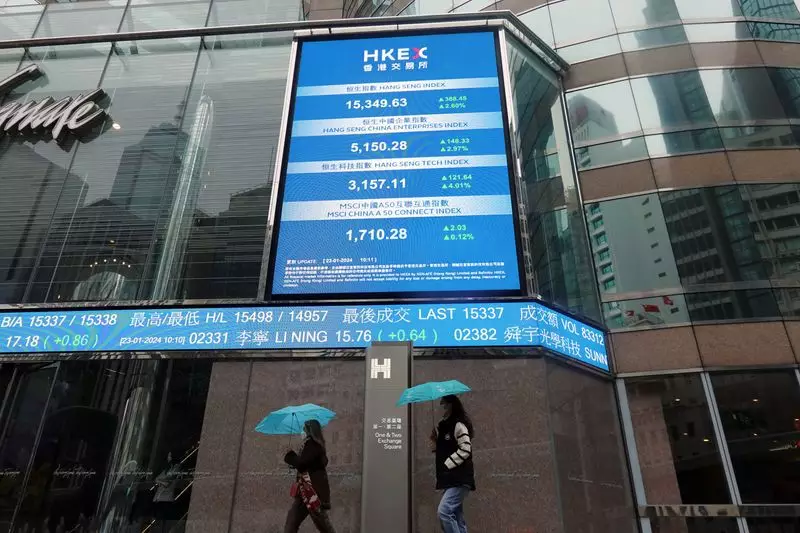The Asian financial markets brace for a challenging day as external pressures from the United States weigh heavily on investor sentiment. With rising bond yields, a strengthening dollar, and an unsettling performance on Wall Street, market participants are left questioning the viability of local investments. The recent comments made by Federal Reserve Chair Jerome Powell, emphasizing the central bank’s hesitation to reduce interest rates, continue to cast a long shadow on global economic conditions. Markets are reacting swiftly as they seek to make sense of these mixed signals, driven by data that suggests the U.S. economy remains robust.
The 10-year Treasury yield in the U.S. crested the 4.50% mark last week, a notable milestone that hasn’t been seen in over five months. Such a spike often dampens market enthusiasm as it suggests higher costs for borrowing and may stifle growth in both corporate and consumer activity. Wall Street’s response was stark, with the Nasdaq dropping more than 2% and capturing its fourth consecutive decline—a troubling trend reminiscent of downturns earlier in the year.
The downturn is not isolated to U.S. markets; it has had a cascading effect on global indices as well. The MSCI World equity index logged its own four-day losing streak, marking the most extended period of decline since early September. Particularly poignant was the performance of the MSCI Asia ex-Japan index, which fell by 4.35%, experiencing its most significant weekly drop since June 2022. Such developments highlight a growing concern among investors about the health of emerging markets, as they now have to contend with an escalating U.S. dollar that reached a year-high.
The dollar’s dominance is not merely a passing phase; its recent jump of 1.6% indicates a trend that analysts are closely monitoring. Goldman Sachs’ emerging market financial conditions index also saw a rise to a three-and-a-half-month peak, underlining the growing pressure on these economies. The cumulative effects of strong U.S. economic data, rising yields, and a robust dollar create a potent cocktail of anxiety for investors, particularly in emerging markets that are already grappling with significant capital outflows. In fact, as reported by Barclays, there have been five consecutive weeks of outflows from emerging market funds, with a notable retreat from bond investments.
As attention shifts to Asia, the economic calendar for Monday appears relatively subdued, with key data points that could provide insights into regional economic health. Among these, New Zealand’s producer prices, Singapore’s non-oil trade figures, and Japanese machinery orders will be closely scrutinized. Moreover, earnings from major player Mitsubishi UFJ and Thailand’s GDP data are likely to attract attention from analysts seeking clues about economic momentum. Economists anticipate that Thailand’s GDP growth will have accelerated to a 2.6% annual rate—an encouraging sign that represents the fastest growth rate in a year and a half.
The Thai baht has shown resilience against the dollar this year, with only a modest decline of 1.3% year-to-date. This relative strength has led analysts to predict minimal easing from the Bank of Thailand in the coming year, instilling a sense of cautious optimism among investors.
Amidst these financial dynamics, geopolitical tensions between the U.S. and China remain front and center. President Xi Jinping’s recent comments to President Joe Biden reaffirm China’s non-negotiable positions on issues such as Taiwan and human rights, which are viewed as “red lines.” These statements are not merely symbolic; they serve to underscore the intricate interplay between politics and economics, which can further complicate market behavior in Asia.
Asian markets are navigating through a tumultuous phase influenced largely by external factors emanating from the U.S. The combination of rising yields, a strong dollar, and geopolitical uncertainties creates a daunting landscape for investors. While local data may provide some reassurance, the prevailing market climate necessitates vigilance and adaptability as stakeholders assess their positions in this volatile environment.

